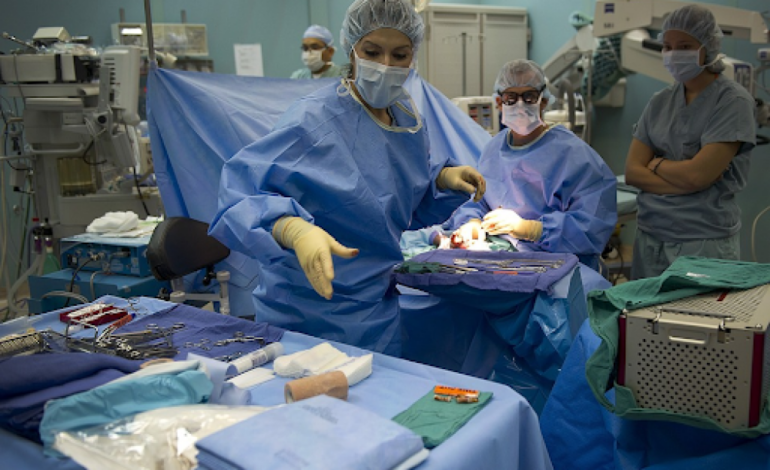Important Standards And Protocols Used By The Medical Industry

When it comes to the medical industry, there is no room for mistakes. Patients’ lives depend on the decisions of medical professionals and healthcare organizations -therefore, ensuring necessary safety protocols are applied and standards are met is non-negotiable.
To achieve only the highest quality care provided, understanding how essential standards and protocols in the medical field work is key.
This blog post will be exploring what those standards and protocols look like within the medical industry so you can better understand how patient care has evolved – with patient safety always at the core.
ISO 13485
This is a critical standard used in the medical industry that ensures that medical devices are safe, reliable, and of excellent quality. Medical professionals are often getting ISO 13485 QMS software in order to properly manage all of their equipment.
Compliance with this standard is essential for medical device manufacturers as it shows potential buyers, customers, and regulatory bodies that their products meet international standards.
ISO 13485 is applicable to all stages of a medical device’s lifecycle, including design, production, distribution, installation, and servicing.
Additionally, it helps medical device manufacturers to improve their processes continually, thereby enhancing both the safety and performance of their products.
So, if you’re looking for high-quality medical devices, make sure you check whether they’re ISO 13485 compliant.
HL7
Health Level Seven (HL7) is a widely recognized standard in the medical industry that enables the exchange of health-related information between healthcare providers and organizations.
This communication protocol ensures that patient data is accurately and quickly transmitted across different systems, eliminating the need for manual data entry and reducing the risk of errors.
HL7 enables healthcare providers to have a complete view of their patient’s medical history, treatments, and test results, regardless of where they are located.
This standard not only improves patient care but also enhances the overall efficiency of healthcare systems. By adopting HL7, healthcare organizations can better focus on providing quality care and improving health outcomes for patients.
DICOM
Digital Imaging and Communications in Medicine (DICOM) is a vital standard used in the medical industry for the efficient sharing of medical imaging data. It has revolutionized the way healthcare professionals access and interpret imaging data.
This innovative standard allows medical facilities to transmit and retrieve images with ease and at a faster pace, making diagnosis and treatment faster and more accurate.
DICOM is versatile in its application and can be used across various medical imaging equipment, including MRI, CT scans, and X-rays. Additionally, it is not limited to just static images – it can also transmit video and audio data.
It is safe to say that DICOM has played a crucial role in providing quality healthcare and promoting the advancement of the medical field.
ICD
The International Classification of Diseases (ICD) plays a critical role in the medical industry. It is the universal standard used to classify and categorize diseases and other health conditions.
By using a standardized index and coding system, healthcare professionals across the world can communicate effectively when discussing diagnoses, and treatment plans and monitoring progress.
But the importance of ICD doesn’t end there. It also assists in resource allocation, public health monitoring, and improving medical research outcomes.
In short, ICD is a cornerstone of modern medicine, affecting every aspect of healthcare delivery. So next time you visit your doctor and see them referencing “ICD codes”, you’ll know the significance of this medical standard.
CPT
Current Procedural Terminology, or CPT, is an essential standard used in the medical industry that plays a significant role in coding, billing, and documentation of medical procedures and services.
It provides a uniform language that both medical professionals and insurance companies understand, making payments for services more efficient and transparent.
CPT codes help medical professionals to accurately communicate procedures performed during a patient’s visit, ensuring that insurance claims are processed quickly and efficiently.
By using up-to-date and accurate codes, medical professionals can provide detailed reports on patient care, improve the quality of care, and make informed decisions.
In conclusion, CPT codes are a crucial part of the medical industry, enhancing communication across healthcare systems, and ultimately, providing better care for patients.
HIPAA
If you’ve ever visited a healthcare provider, chances are you’ve heard the term HIPAA mentioned. It stands for the Health Insurance Portability and Accountability Act, which was passed in 1996 to establish national standards for protecting the privacy and security of individuals’ personal health information.
This important law applies to healthcare providers and other organizations involved in healthcare, such as insurers and pharmacies.
Under HIPAA, patients have the right to access their own medical records and control how their information is shared. For healthcare professionals, complying with HIPAA regulations is essential to maintain patient trust and avoid potential legal consequences.
Overall, HIPAA plays a critical role in ensuring the confidentiality and security of vital medical information.
SNOMED CT
Systematized Nomenclature of Medicine – Clinical Terms (SNOMED-CT) is the standard used by medical professionals worldwide to classify clinical terms.
With over 300,000 concepts continually expanding, SNOMED-CT provides a standardized vocabulary that promotes seamless communication among different healthcare settings, reducing errors and increasing efficiency.
Its user-friendly interface allows clinicians to capture a patient’s medical history accurately, making it an integral part of electronic health records.
SNOMED-CT’s contributions to the medical industry have been immense, with hundreds of healthcare systems using it daily to classify clinical data.
It’s no doubt that it has revolutionized the way healthcare professionals identify and categorize clinical data, making it a fundamental tool in standardizing medical care globally.
NCPDP
The National Council for Prescription Drug Programs (NCPDP) is a vital standard in the medical industry. Established in 1977, it is a non-profit organization that sets standards for the transfer of prescription and healthcare-related information between healthcare providers, patients, and payers.
These standards help to increase efficiency, accuracy, and safety across the healthcare industry.
By enabling the exchange of information between various stakeholders, the NCPDP is instrumental in ensuring that patients receive the correct medication, in the correct dosage, at the correct time.
As medical technology continues to advance, the importance of standards like this one cannot be overstated.

Meeting the industry standards of medical care is essential for safe and quality patient care, as well as to remain compliant with various regulations.
ISO 13485, HL7, DICOM, ICD, CPT, HIPAA, SNOMED CT, and NCPDP are some of the must-follow protocols one should be aware of in the medical industry.
With a good workflow platform in place that supports these standards and protocols, healthcare providers can ensure their practices remain efficient despite compliance measures.
It’s important for medical practice owners to educate themselves on best practices for staying up to date on new regulations and ensuring their staff does the same.










